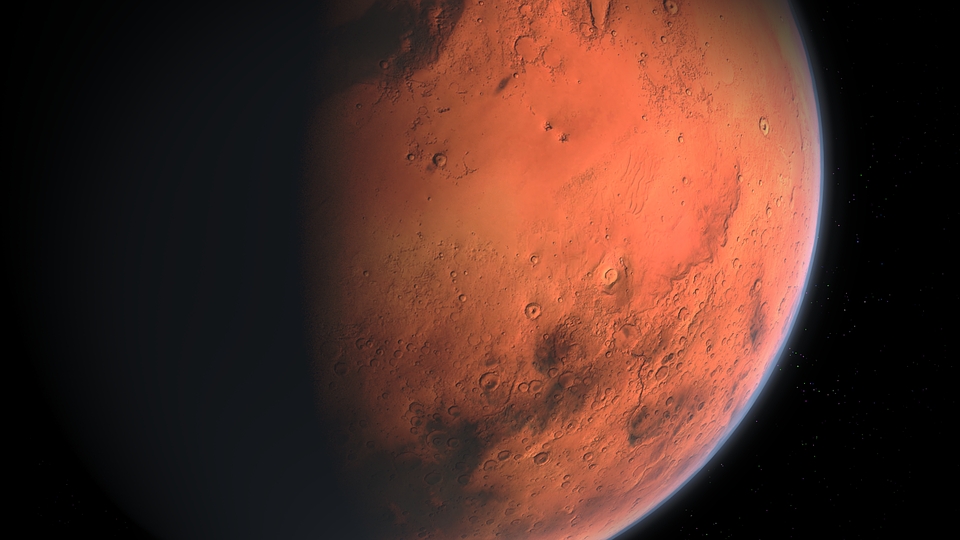Several space agencies in the world are gearing up for their respective Mars missions. With the European Space Agency and Russia’s Rocosmos teaming up for a Mars mission, scientists say that the best place to search for alien life on the red planet would be under its surface.
Express reports that a study conducted by astrophysicist and researcher Dimitra Atri from the NYU Abu Dhabi Center for Space Science found that the subsurface conditions on Mars may be the most ideal place for finding microorganisms. As to why the subsurface is the best place to look for alien life, this is because there are traces of water present and that any life under the surface of Mars would be protected from solar radiation, as the Red Planet is known for having a thin or a barely-there atmosphere.
The ESA and Rocosmos’ joint rover, ExoMars will be launching in 2022, making this find especially significant in the upcoming Mars mission of the agencies.
“It is exciting to contemplate that life could survive in such a harsh environment, as few as two meters below the surface of Mars. When the Rosalind Franklin rover onboard the ExoMars mission equipped with a subsurface drill, is launched in 2022, it will be well-suited to detect extant microbial life and hopefully provide some important insights,” said Atri.
The ExoMars rover’s final testing is expected to take place in Turin, Italy. The actual Mars mission for the rover was originally scheduled this year, however, due to the safety concerns and travel restrictions from the pandemic, the agencies had to postpone the launch until 2022.
Meanwhile, scientists have recently found traces of carbon dioxide and ozone on Mars’s atmosphere, further raising the possibility of life existing on the Red Planet. Scientists will use this finding to see if there is methane on Mars as it may be a sign of alien life.
However, the presence of methane on Mars in itself has been subject to debate since 2003. Nevertheless, the ExoMars Trace Gas Orbiter found unusual signatures of carbon dioxide and ozone on the wavelengths where methane is expected to be present.



 Synthetic human embryos let researchers study early development while sidestepping ethical and logistical hurdles
Synthetic human embryos let researchers study early development while sidestepping ethical and logistical hurdles  Orbital resonance − the striking gravitational dance done by planets with aligning orbits
Orbital resonance − the striking gravitational dance done by planets with aligning orbits  How do airplanes fly? An aerospace engineer explains the physics of flight
How do airplanes fly? An aerospace engineer explains the physics of flight  Six space missions to look forward to in 2024
Six space missions to look forward to in 2024  Alpha, beta, theta: what are brain states and brain waves? And can we control them?
Alpha, beta, theta: what are brain states and brain waves? And can we control them?  Black hole, neutron star or something new? We discovered an object that defies explanation
Black hole, neutron star or something new? We discovered an object that defies explanation  Eggs from men, sperm from women: how stem cell science may change how we reproduce
Eggs from men, sperm from women: how stem cell science may change how we reproduce  Why now is the time to address humanity’s impact on the moon
Why now is the time to address humanity’s impact on the moon  Tatahouine: 'Star Wars meteorite' sheds light on the early Solar System
Tatahouine: 'Star Wars meteorite' sheds light on the early Solar System  Larger and more frequent solar storms will make for potential disruptions and spectacular auroras on Earth
Larger and more frequent solar storms will make for potential disruptions and spectacular auroras on Earth  Customizing mRNA is easy, and that's what makes it the next frontier for personalized medicine − a molecular biologist explains
Customizing mRNA is easy, and that's what makes it the next frontier for personalized medicine − a molecular biologist explains  Archeoastronomy uses the rare times and places of previous total solar eclipses to help us measure history
Archeoastronomy uses the rare times and places of previous total solar eclipses to help us measure history  The brain is the most complicated object in the universe. This is the story of scientists’ quest to decode it – and read people’s minds
The brain is the most complicated object in the universe. This is the story of scientists’ quest to decode it – and read people’s minds  Spacesuits need a major upgrade for the next phase of exploration
Spacesuits need a major upgrade for the next phase of exploration  Why is the universe ripping itself apart? A new study of exploding stars shows dark energy may be more complicated than we thought
Why is the universe ripping itself apart? A new study of exploding stars shows dark energy may be more complicated than we thought 





























